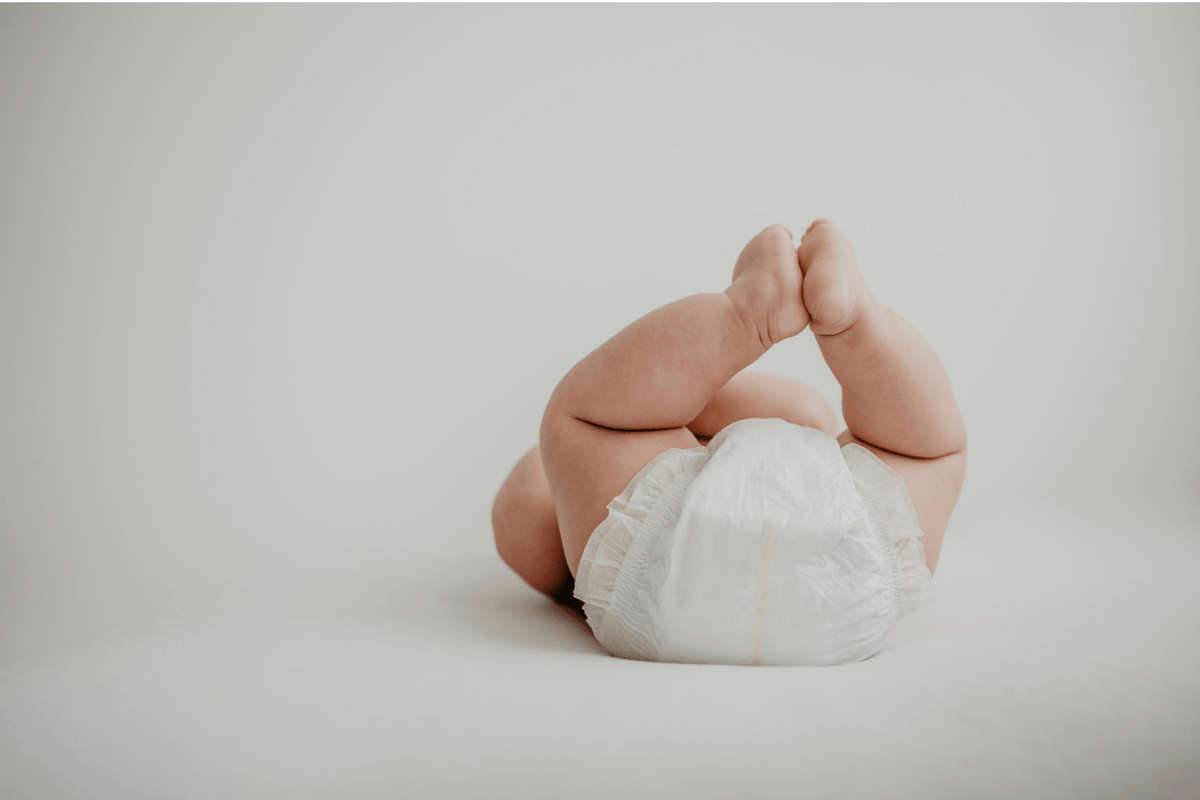
Is Green Poop Normal for My Baby?
|
4 min
|
4 min
One of the first things you realize after bringing your baby home? You become weirdly obsessed with poop. From the color to the consistency to the frequency, suddenly nothing feels too bizarre to Google at 2 a.m.
High on the list of “Wait, is this normal?” concerns: green baby poop.
Most of the time? Yes. An occasional green poop is usually nothing to panic about. While mustard-yellow is the “classic” color for breastfed baby poop, green stools aren’t automatically a sign of something wrong.
But if it keeps happening, it’s worth looking at the full picture—because sometimes, your baby’s poop is trying to tell you something.
In the early days, your baby will pass meconium—a sticky, black tar-like substance made up of cells, amniotic fluid, and other stuff they ingested in the womb. This is totally normal and expected.
By around Day 3, if breastfeeding is going well, stools transition to a greenish-black and then yellow by about Day 5. These “transitional stools” mark the shift toward more mature digestion.
During the first six weeks, healthy, breastfed babies typically poop at least 3–4 times a day, with poops at least the size of a quarter (1). This is a reassuring sign that they’re getting enough milk and that their digestive system is working as it should.
If your baby isn’t pooping often, or if stools never turn yellow by Day 5, it’s a good idea to check in with your pediatrician or IBCLC to rule out feeding or weight gain issues (2).
Green poop on its own usually isn’t a red flag—but context matters. Here's a breakdown of common causes:
Illness can cause stool color and consistency to shift. If your baby has a virus, cold, or gut imbalance, green stools may follow. If symptoms like fever, dehydration, or poor feeding show up alongside it, loop in your pediatrician right away (3).
🍼 Pro Tip: Continue breastfeeding during illness—it’s one of the best immune-supporting tools you have.
If your baby’s gassy, fussy, and having frothy, bright green poops, they might be struggling with lactose overload. This can happen when milk is moving too quickly through the gut or when there's an abundant supply and the balance of milk sugars overwhelms their digestion (1).
On the flip side, if baby’s poops are small, infrequent, and green, and they seem tired or not gaining weight, they may not be getting enough milk. This is different from lactose overload and often requires a close look at milk supply and feeding efficiency (2).
Some medications and antibiotics—common in both moms and babies—can speed up intestinal transit, leading to green or looser stools.
Did you know? Antibiotics account for nearly 25% of all pediatric prescriptions and are a frequent cause of antibiotic-associated diarrhea. The well-studied probiotic strain Lactobacillus rhamnosus GG (LGG), found in our Organic Probiotic Drops, can help reduce the risk of both acute and antibiotic-related diarrhea (3).
That green smoothie you had? Or your baby’s new spinach purée? Yep—poop can reflect that!
Dark green, gray-green, or black-green poop can also show up if your baby is on formula fortified with iron, which is both normal and beneficial for their development. Iron can slightly alter stool color (4).
When teething hits, babies often swallow excess saliva—which can affect poop. Looser, green stools may show up during teething phases, and as long as other symptoms are mild, it’s not a cause for concern.
Your baby's gut microbiome is still finding its balance in the early months. The infant gut undergoes rapid changes as it adjusts to breast milk, formula, environmental factors, and even skin-to-skin contact (4).
These shifts can affect how lactose is digested. When milk sugars aren’t fully broken down in the small intestine, they pass into the colon and are fermented by gut bacteria—producing gas and sometimes causing green, mucousy, or frothy poops (4). This can also happen when poop moves too quickly through the intestines for bile to be broken down, leading to greener hues.
Let’s be honest: the phrase “green poop is normal” gets tossed around a lot. And while it’s true that poop colors can vary for all kinds of harmless reasons, we also have to ask:
At what point are we normalizing something that might actually be a sign of discomfort?
Babies can’t say, “Hey, I feel crampy” or “That hurt my belly.” Their poop, behavior, feeding cues, and weight gain are their voice. And if green poop is frequent, especially paired with gas, irritability, or mucus, it may be their body’s way of waving a flag—not to scare us, but to get our attention.
As caregivers, it’s easy to dismiss these signs as quirks of babyhood—especially when everyone says it’s normal. But just because something is common doesn’t mean it should be ignored. Listening to the subtleties of your baby’s digestion is one of the most powerful ways you can advocate for their comfort and health.
Enter: Probiotics. Certain strains have been shown to support infant digestion and help reduce discomfort.
Lactobacillus rhamnosus GG (LGG): Well-studied for reducing antibiotic-associated diarrhea and supporting immune function (5).
Lactobacillus reuteri: Early research shows it may reduce crying time in babies with colic and help support regular bowel patterns (3).
Both are featured in our Organic Probiotic Drops , designed to support a healthy microbiome and soothe sensitive tummies.
Green poop is usually just a temporary stop on your baby’s digestive journey. But sometimes, it’s their way of saying, “Hey—something’s up.”
If green stools are persistent, bloody, very watery, or accompanied by poor weight gain, don’t wait. Reach out to your pediatrician or IBCLC for personalized guidance.
And remember: your instincts matter. If something feels off, getting a second opinion is always a good call.
Need support? Find an IBCLC